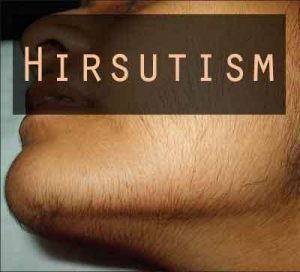- Home
- Editorial
- News
- Practice Guidelines
- Anesthesiology Guidelines
- Cancer Guidelines
- Cardiac Sciences Guidelines
- Critical Care Guidelines
- Dentistry Guidelines
- Dermatology Guidelines
- Diabetes and Endo Guidelines
- Diagnostics Guidelines
- ENT Guidelines
- Featured Practice Guidelines
- Gastroenterology Guidelines
- Geriatrics Guidelines
- Medicine Guidelines
- Nephrology Guidelines
- Neurosciences Guidelines
- Obs and Gynae Guidelines
- Ophthalmology Guidelines
- Orthopaedics Guidelines
- Paediatrics Guidelines
- Psychiatry Guidelines
- Pulmonology Guidelines
- Radiology Guidelines
- Surgery Guidelines
- Urology Guidelines
Hirsutism in Premenopausal Women: New Management Guidelines

Hirsutism is defined as excessive terminal hair growth in male androgen-dependent areas and is distinguished from hypertrichosis which is generalized nonsexual excessive hair growth. It affects 5% to 10% of women worldwide and can lead to significant emotional distress and expense involving medications, cosmetics, and hair removal procedures. Hirsutism is a clinical diagnosis based on the Ferriman-Gallwey (FG) score, which rates hair growth from 0 to 4 in 9 androgen-dependent areas. In the US general population, a normal score is less than 8; mild, 8-15; and severe, greater than 15.Endocrine Society, Androgen Excess and Polycystic Ovary Syndrome Society, European Society of Endocrinology have updated the “Evaluation and Treatment of Hirsutism in Premenopausal Women the original: Clinical Practice Guideline,” published by Endocrine Society in 2008.The task force commissioned two systematic reviews and used the best available evidence from other published systematic reviews and individual studies.
Diagnosis
Obtain a random serum total testosterone measurement to assess for androgen excess in all women with an abnormal hirsutism score (weak recommendation, low-quality evidence).
Obtain an early-morning 17-hydroxyprogesterone measurement in all women with elevated testosterone and in women with hirsutism who are at high risk of congenital adrenal hyperplasia (weak recommendation; low-quality evidence).
- Do not measure androgen levels in women with normal menses and a normal hirsutism score (weak recommendation; low-quality evidence).
Pharmacologic treatment
Start with pharmacologic therapy and add direct hair removal methods for women with a normal hirsutism score but patient-important hirsutism despite shaving or plucking (weak recommendation; very low-quality evidence). In women who are not seeking pregnancy, oral contraceptive pills (OCPs) are recommended as initial therapy (weak recommendation; low-quality evidence).
Either OCPs or antiandrogens are acceptable initial therapies in women who are not sexually active, have undergone permanent sterilization, or are using long-acting reversible contraception (weak recommendation; very low-quality evidence).
Combination therapy with an antiandrogen is recommended if patient-important hirsutism persists despite 6 months of monotherapy with an OCP (weak recommendation; low-quality evidence).
For most women with patient-important hirsutism despite cosmetic measures (shaving, plucking, waxing), task force recommends starting with pharmacological therapy and adding direct hair removal methods (electrolysis, photoepilation) for those who desire additional cosmetic benefit.For women with mild hirsutism and no evidence of an endocrine disorder, task force suggests either pharmacological therapy or direct hair removal methods.For pharmacological therapy, task force suggests oral combined estrogen-progestin contraceptives for the majority of women.

Disclaimer: This site is primarily intended for healthcare professionals. Any content/information on this website does not replace the advice of medical and/or health professionals and should not be construed as medical/diagnostic advice/endorsement or prescription. Use of this site is subject to our terms of use, privacy policy, advertisement policy. © 2020 Minerva Medical Treatment Pvt Ltd